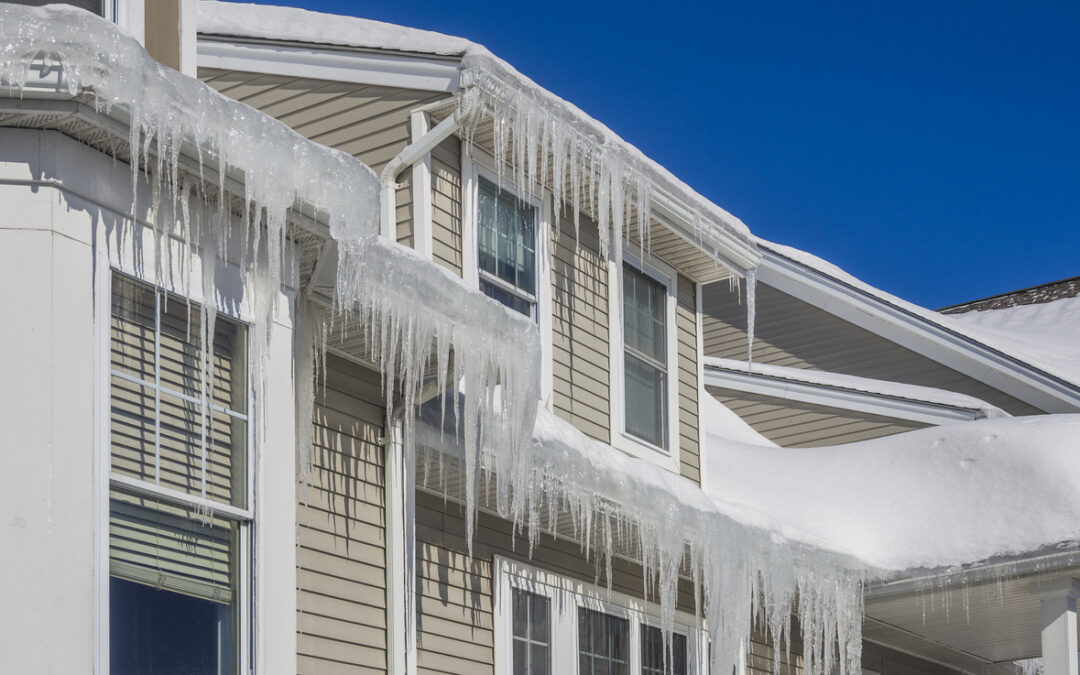As temperatures drop, new hazards arrive around the home, but some simple preventative measures can help homeowners avoid insurance claims.
You’ll want to avoid insurance claims whenever possible because every request you make can cause your premiums to increase. It’s particularly critical to put in the effort to stop preventable damage to your home.
Many hazards arise in the winter that you’ll want to keep an eye on. These issues can damage various parts of your home as cold, snowy weather moves in, costing you significant expense and hassle.
Here’s a look at some quick precautions you can take to lessen the chances of damage occurring to your property this winter:
Protect pipes from freezing
Water expands as it freezes, and copper pipes don’t provide any protection against this process. For that reason, it’s vital to protect your water lines when temperatures get below 32° Fahrenheit. The more temperatures drop, the faster water will freeze and expand.
The first step to protecting a home’s pipes involves making sure all outdoor faucets are drained, and hoses are disconnected. Turning off the outside water from the source and running all the moisture out of the water line is a good start. Some homeowners will invest in a frost-free faucet, which protects the water line from freezing.
You’ll also want to ensure pipes running through your attic, basement, crawl space, and garage have the necessary insulation to stop the water from freezing as it goes through them. Some homeowners will invest in foam, fiberglass, rubber pipe wraps, or even electric heat cables to provide additional insulation.
Another precaution is installing an emergency pressure release valve in your plumbing system. This valve helps relieve the tension if your pipes start to freeze. Doing a seasonal check of your lines or having them inspected by a professional contractor can also prevent potential damage.
Clean the gutters
Gutters are useful fixtures that divert water from rain and melting snow to your downspouts, preventing this liquid from pouring over the side of your house.
However, gutters tend to collect leaves, sticks, and other debris in the fall, leading to clogs. When you have these blockages, snow can melt during the day and drain into the gutters—but it has nowhere to go from there. The result is standing water, which can then freeze at night and create an ice dam. An ice dam is far more challenging to remove from gutters than the initial debris and takes up more space.
Once you have a significant ice dam, you can end up with a water back-up that can get under the roofline, doing expensive damage to your home.
Clean your gutters every fall to avoid ice dams and the problems they cause. Once you have an ice dam, heated cables are a good way to eliminate them. There are also numerous preventative methods, including adding flashing or ventilation to your roof, that might have to wait for spring.
Remove overhanging tree branches
It’s great having tall trees on your property, but they can become a bit of a problem in the winter. Tree branches can take a beating from the wind, ice, and snow, leading to potential issues.
When a tree branch is compromised, there’s a good chance you won’t even realize it until it’s too late. The result could be a branch crashing onto your home and doing a considerable amount of damage.
Prevention is critical in this situation, as you can prune your trees in the summer or fall to ensure nothing is hanging over your home. Even seemingly small branches can damage a roof or gutters, leading to a home insurance claim that you won’t want to make.
Clear snow from the roof
Many different winter elements can damage a roof in the winter. We mentioned ice dams, but the snow and ice that sit on your roof can also cause problems.
A heavy snowfall that doesn’t melt quickly enough can overload a roof and lead to sagging. You might hear a popping noise in this situation, and you’ll want to have a roofing contractor look at the damage immediately.
You can prevent this damage from occurring by clearing some of the snow from your roof. You won’t want to climb up there in the winter because it can be slippery and dangerous. But investing in an extra-long broom or rake will give you enough reach to clear the edges, reducing the weight on the roof.
Clearing icicles is also a good idea because they can damage shingles and gutters as they expand.
Take steps to prevent flooding
As winter comes to an end—or if we end up with a period of warm weather in the middle of the season—snow and ice will begin to melt.
While this event is often joyous since it signifies the beginning of spring, the water that runs off the roof and through a yard can cause flooding.
One of the most common scenarios is subterranean flooding in the basement because of melting snow running through cracks in the home’s foundation. Installing a sump pump and winterizing it for sub-freezing temperatures moves water away from your home as the snow and ice melt.
An insurance policy for the winter
New York is full of great winter activities that can make the colder months pretty enjoyable. But property damage caused by bad weather can quickly make the season challenging.
Even if you take the necessary precautions and winterize your home, you could experience an issue. Thankfully, NICRIS Insurance can help you get coverage for all of the scenarios that a New York winter can throw at you.
If you’re looking for a free, custom insurance review or some advice on your next policy, get in touch with the experts at NICRIS today.

